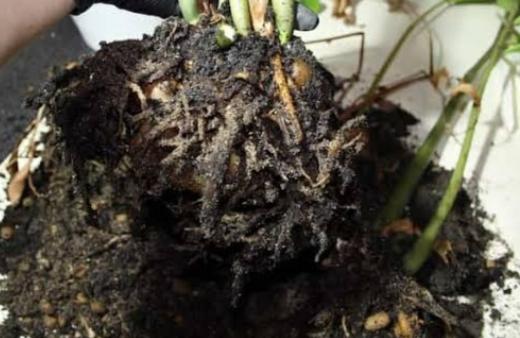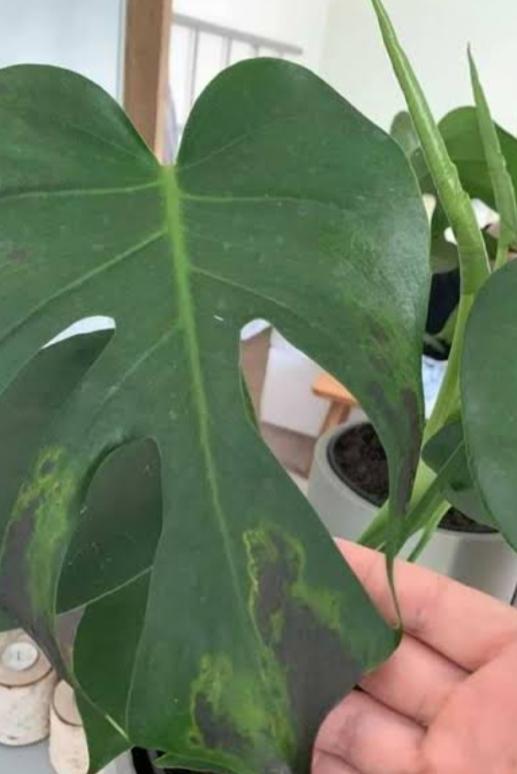Monstera Swiss cheese Plant
Monstera Swiss Cheese Plant is a Climber which grows as a vine, grown in well drained and Loamy soils, with moderate shade and high Moisture content to thrive well.
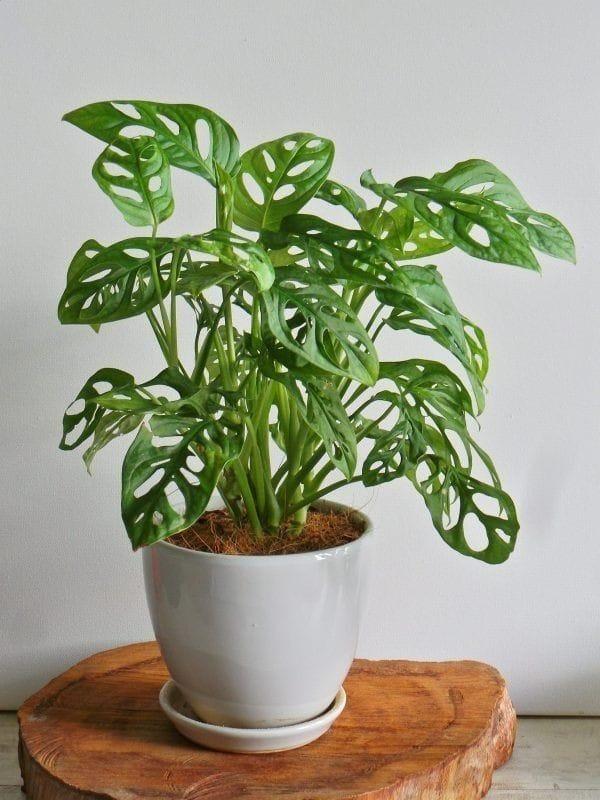
Habit
Climber
Height
2-3 meters
Growth
Fast
Soil
Well-drained, sandy loam
Shade
moderate shade
Moisture
Moist
Edible
No
Medicinal
No
Origin
Central America
Climatic Condition
Tropical, humid
Temperature (°)
20-30
Humidity (%)
70-80
Potting media
Loamy or peat-based soil
Fertilizers
Potassium-rich
Watering
High
Plant Weight
1-2 kg
Flowering Time
Spring to Fall
Soil Ph level
6.0-7.5
Water Ph level
6.0-6.5
Soil EC
0.3-0.4 mS/cm
Yield Per Plant
High
NPK ratio
20:20:20
life Span
5-10 years
Health Benefits
Used for decoration, purifies air, promotes relaxation
Suggested Grow Media or Potting Mix ?
50% peat moss, 30% perlite, 20% pine bark
Suggested Fertigation/Fertilizers
Fertilize every 4 weeks with a balanced, water-soluble fertilizer.
Common Diseases and Remedies
Root Rot , leaf spot
over watering or poor drainage , yellowish brown spots , entire leaf spots turns brown and falls off
remove infected roots , maintain good air circulation
HEALTH BENEFITS
- Absorbs indoor air pollutants.
- Helps create a soothing and refreshing environment.
- Encourages mental clarity and focus.
What Is An Monstera Swiss Cheese Mosstick?
Monstera Swiss Cheese, also known as Monstera deliciosa, is a popular tropical houseplant known for its large, glossy leaves with distinctive cracks and holes reminiscent of Swiss cheese. Care is relatively simple, requiring indirect light, regular watering (until the soil dries out between waterings), and occasional fertilization during the growing season. Some hobbyists use moss poles to support climbing growth.
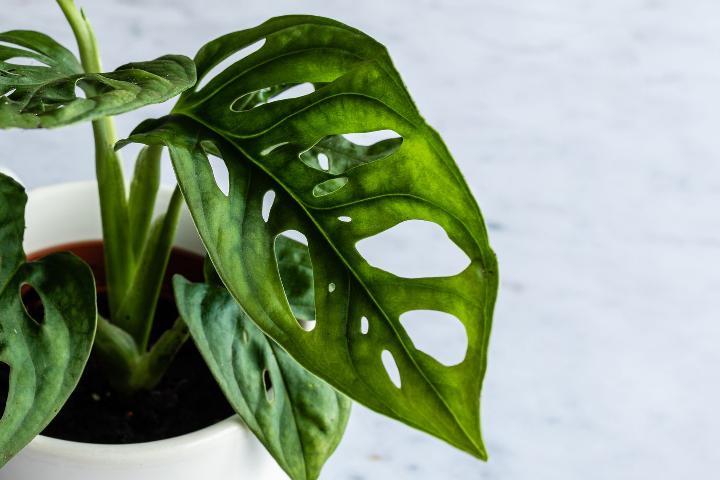
What Are The Different Types Of Monstera Swiss Cheese Mosstick?
1. Monstera deliciosa "Variegata" or variegated monstera
This variety has cream or white variegated leaves and offers a striking visual appeal.
2. Monstera deliciosa 'Albo Variegata' or Thai constellation
This variety has large white spots on the leaves that contrast nicely with the green.
3. Monstera deliciosa "Borsigiana"
A smaller, more compact version of the traditional Monstera deliciosa, suitable for small spaces.
4. Monstera adansonii
Often called Swiss cheese vine, this species has smaller leaves with windows similar to Monstera deliciosa, but is a vine.
5. Monstera obliqua
Known as the "Swiss cheese plant's cousin," this species has more perforated leaves compared to Monstera deliciosa, giving it an even more intricate appearance.
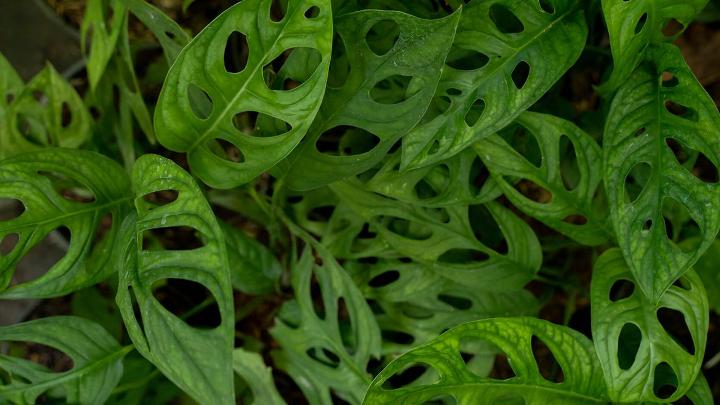
How to care for Monstera Swiss Cheese Mosstick?
1. Location
Monstera Swiss Cheese Plant (Monstera deliciosa) is native to the tropical forests of southern Mexico, Guatemala, and parts of Central America. In its natural habitat, it usually grows as an epiphyte and uses its aerial roots to climb trees. However, it can also grow as a land plant and spread throughout the forest floor.
2. Sunlight
Monstera Swiss Cheese plants prefer bright, indirect sunlight. It can tolerate some direct sunlight, especially in the morning, but prolonged exposure to strong sunlight can cause leaf burn. It's best placed near a sunny window or in a location with bright indirect light. Avoid placing it in a dark place as this may cause the plant to become leggy and the leaves may become smaller.
3. Soil
Monstera Swiss Cheese plants grow in well-drained, aerated potting soil that retains some moisture but is not soggy. Suitable soil mixes for Monstera deliciosa typically include a combination of peat moss, perlite, and/or coarse sand to promote drainage and aeration. Additionally, adding organic matter such as compost or old bark will provide nutrients and improve soil structure. Avoid heavily compacted soils, which can cause root rot. It's also important to make sure the pot has drainage holes to prevent water from pooling on the roots.
4. Hydration
Monstera Swiss Cheese plants like to be constantly moist, but not wet. Between waterings, allow the top of the soil to dry out a little, then water thoroughly until the water drains from the bottom of the pot. During the growing season (spring and summer) you need to water more frequently, but during the dormant season (autumn and winter) you can water less frequently.
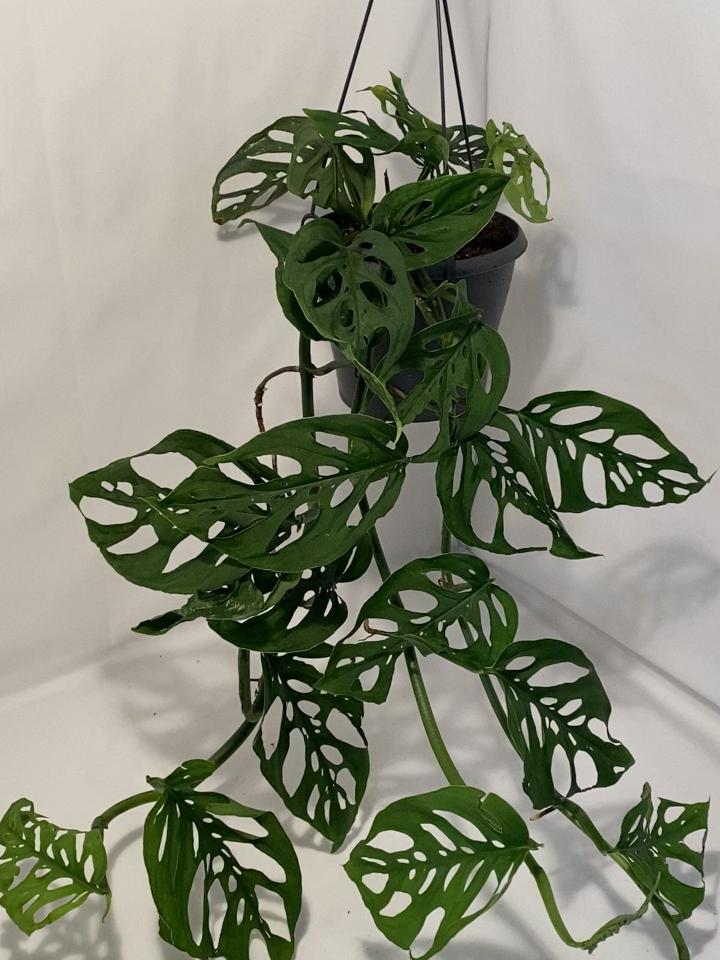
5. Nourishment
One of the largest varieties of indoor palm trees, this is a perfect palm plant indoors in one’s ornamental garden. It soon becomes the highlight of any place due to its gigantic and bright foliage. Originally from Madagascar, the plant loves the heat of the tropical climates with more humidity than dryness. One may grow it in large ceramic pots to accommodate the beauty that it is.
6. Issues
Overwatering or poorly drained soil can cause root rot, which is characterized by brown, mushy roots. To avoid this problem, let the soil dry out a little between waterings and make sure the pot has sufficient drainage. If there is insufficient light, the plant will become leggy, have long stems, and sparse leaves. Place the plant in a bright spot to promote compact, bushy growth. Common pests that can affect Monstera plants include spider mites, mealybugs, and scale insects. Inspect plants regularly for signs of pests and treat infestations immediately with insecticidal soap or neem oil.
What Are The Benefits Of Monstera Swiss Cheese Mosstick
Air Purification: Like many houseplants, Monstera Swiss Cheese plants help improve indoor air quality by removing toxins such as formaldehyde and benzene from the air. Masu. Humidity Regulation: Monstera plants' large leaves regulate indoor humidity, creating a more comfortable environment, especially in dry climates and in winter when indoor heating dries the air. Stress Reduction: Caring for houseplants like Monstera Swiss Cheese has the following psychological benefits: B. Reduces stress and anxiety, improves mood, and provides a sense of success and purpose. Biophilic Design: Incorporating plants, including the Monstera Swiss Cheese plant, into indoor spaces is a key element of biophilic design, creating spaces that connect people with nature and promote health, well-being, and productivity. is intended to produce. Aesthetic Appeal: With large, holey leaves, the Monstera Swiss Cheese plant adds tropical elegance to any indoor space, enhancing its aesthetic appeal and creating a sense of greenery and vitality.

FAQs About Growing Monstera Swiss Cheese Mosstick
1. What does a healthy Monstera Swiss Cheese plant look like?
The leaves of a healthy Monstera plant are lush and bright green, with active photosynthesis and good nutrient absorption. It shows that. This plant has strong stems and an upright nature, with no signs of wilting or drooping. A healthy Monstera plant will grow steadily, producing new leaves and sending out vines and stems. A healthy Monstera plant is free of pest infestations such as spider mites and mealybugs, and there are no signs of disease such as leaf spot or root rot.
2. What is the best soil for Monstera deliciosa?
The best soil for Monstera deliciosa is a well-drained, aerated potting mix that retains some moisture but doesn't become soggy. Perlite is a lightweight volcanic rock material that improves soil drainage and aeration, preventing compaction and root rot. Adding organic matter such as compost, old bark, or coconut can nourish your plants and improve soil structure.
3. How much sunlight does a Monstera Swiss Cheese plant need?
Monstera Swiss Cheese plants grow in bright, indirect sunlight. Ideally, place it near a window that receives filtered sunlight or in a location that receives bright indirect light. Direct sunlight, especially during the hottest part of the day, can cause leaf burn. Therefore, it is important not to expose the leaves to direct sunlight for a long time. However, it can tolerate some morning sun and mild afternoon s
4. How often should I water my Monstera Swiss Cheese plant?
How often you should water your Monstera Swiss Cheese plant depends on a variety of factors, including: B. Temperature, humidity, light levels, and type of soil in which it is planted. When watering your monstera, give it plenty of water until water runs out from the bottom of the pot. This will ensure that the entire root ball is thoroughly moistened.
5. Can Monstera Swiss Cheese be propagated by cuttings?
Yes, Monstera Swiss Cheese can be propagated by cuttings. Choose stems with at least one node and several healthy leaves. For best results, the length of the cut should be approximately 15-30 cm.
